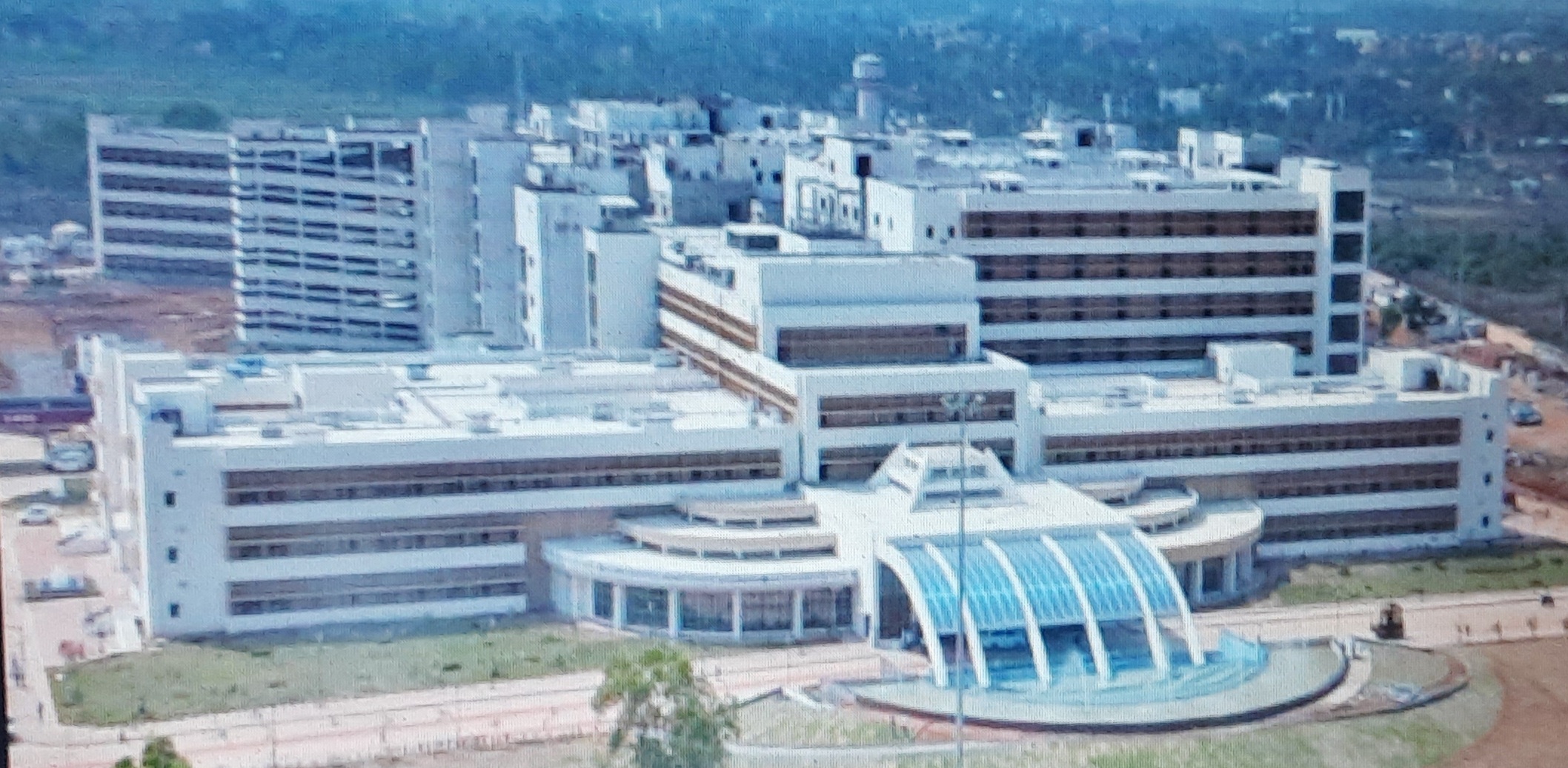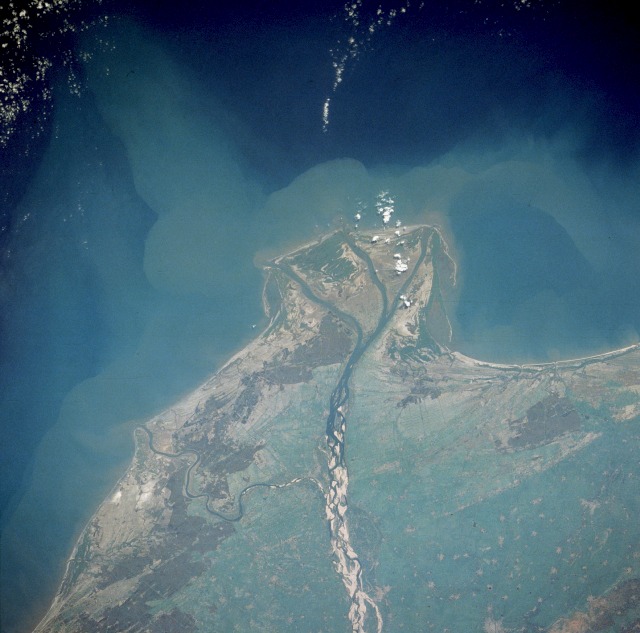|
All India Institute Of Medical Sciences, Mangalagiri
All India Institute of Medical Sciences, Mangalagiri (AIIMS Mangalagiri or AIIMS-MG) is a medical research public higher education institute located in the Mangalagiri Tadepalle Municipal Corporation in Guntur district, Andhra Pradesh, India. It is one of the four "Phase-IV" All India Institutes of Medical Sciences (AIIMS) announced in July 2014. It is located between Guntur and Vijayawada.Foundation stone is laid by Union minister's J.P Nadda , M.Venkaiah Naidu & chief minister of Andhra Pradesh N. Chandrababu Naidu History In July 2014, in the budget speech for 2014–15, the Minister of Finance Arun Jaitley announced a budget of for setting up four new AIIMS, in Andhra Pradesh, West Bengal, the Vidarbha region of Maharashtra and the Purvanchal region in Uttar Pradesh, the so-called "Phase-IV" institutes. In October 2015 the AIIMS at Manglagiri was approved by the cabinet at a cost of . Construction work on the permanent campus started in September 2017. Academics Mean ... [...More Info...] [...Related Items...] OR: [Wikipedia] [Google] [Baidu] |
Public University
A public university or public college is a university or college that is in owned by the state or receives significant public funds through a national or subnational government, as opposed to a private university. Whether a national university is considered public varies from one country (or region) to another, largely depending on the specific education landscape. Africa Egypt In Egypt, Al-Azhar University was founded in 970 AD as a madrasa; it formally became a public university in 1961 and is one of the oldest institutions of higher education in the world. In the 20th century, Egypt opened many other public universities with government-subsidized tuition fees, including Cairo University in 1908, Alexandria University in 1912, Assiut University in 1928, Ain Shams University in 1957, Helwan University in 1959, Beni-Suef University in 1963, Zagazig University in 1974, Benha University in 1976, and Suez Canal University in 1989. Kenya In Kenya, the Ministry of Ed ... [...More Info...] [...Related Items...] OR: [Wikipedia] [Google] [Baidu] |
Vidarbha
Vidarbha (Pronunciation: Help:IPA/Marathi, [ʋid̪əɾbʱə]) is a geographical region in the east of the Indian state of Maharashtra and a Proposed states and union territories of India#Maharashtra, proposed state of central India, comprising the state's Amravati Division, Amravati and Nagpur Division, Nagpur divisions. Amravati Division's former name is Berar Province, Berar (Varhad in Marathi language, Marathi). It occupies 31.6% of the total area and holds 21.3% of the total population of Maharashtra. It borders the state of Madhya Pradesh to the north, Chhattisgarh to the east, Telangana to the south and Marathwada and North Maharashtra regions of Maharashtra to the west. Situated in central India. The largest city in Vidarbha is Nagpur followed by Amravati, Akola, and Chandrapur. A majority of Vidarbhians speak Varhadi and Zadi dialects of Marathi. The Nagpur region is known for growing Orange (fruit), oranges and cotton. Vidarbha holds two-thirds of Maharashtra's mineral re ... [...More Info...] [...Related Items...] OR: [Wikipedia] [Google] [Baidu] |
Medical Colleges In Andhra Pradesh
Medicine is the science and practice of caring for a patient, managing the diagnosis, prognosis, prevention, treatment, palliation of their injury or disease, and promoting their health. Medicine encompasses a variety of health care practices evolved to maintain and restore health by the prevention and treatment of illness. Contemporary medicine applies biomedical sciences, biomedical research, genetics, and medical technology to diagnose, treat, and prevent injury and disease, typically through pharmaceuticals or surgery, but also through therapies as diverse as psychotherapy, external splints and traction, medical devices, biologics, and ionizing radiation, amongst others. Medicine has been practiced since prehistoric times, and for most of this time it was an art (an area of skill and knowledge), frequently having connections to the religious and philosophical beliefs of local culture. For example, a medicine man would apply herbs and say prayers for healing, or an anci ... [...More Info...] [...Related Items...] OR: [Wikipedia] [Google] [Baidu] |
Colleges In Guntur
A college (Latin: ''collegium'') is an educational institution or a constituent part of one. A college may be a degree-awarding tertiary educational institution, a part of a collegiate or federal university, an institution offering vocational education, or a secondary school. In most of the world, a college may be a high school or secondary school, a college of further education, a training institution that awards trade qualifications, a higher-education provider that does not have university status (often without its own degree-awarding powers), or a constituent part of a university. In the United States, a college may offer undergraduate programs – either as an independent institution or as the undergraduate program of a university – or it may be a residential college of a university or a community college, referring to (primarily public) higher education institutions that aim to provide affordable and accessible education, usually limited to two-year as ... [...More Info...] [...Related Items...] OR: [Wikipedia] [Google] [Baidu] |
List Of Medical Colleges In India
India's medical schools are usually called medical colleges. Medical school quality is controlled by the central regulatory authority, the National Medical Commission, which inspects the institutes from time to time and recognizes institutes for specific courses. Most of the medical schools were set up by the central and state governments in the 1950s and 60s. But in the 1980s, several private medical institutes were founded in several states, particularly in Karnataka. Andhra Pradesh state allowed the founding of several private institutions in the new millennium. Medical education in a private institute can be expensive if not subsidized by the government. The basic medical qualification obtained in Indian medical schools is MBBS. The MBBS course is four-and-a-half years, followed by one year of Compulsory Rotating Residential Internship (CRRI). The MBBS course is followed by MS, a post-graduation course in surgical specialties, or MD, a post-graduation course in medical speci ... [...More Info...] [...Related Items...] OR: [Wikipedia] [Google] [Baidu] |
Education In India
Education in India is primarily managed by state-run public education system, which fall under the command of the government at three levels: central, state and local. Under various articles of the Indian Constitution and the Right of Children to Free and Compulsory Education Act, 2009, free and compulsory education is provided as a fundamental right to children aged 6 to 14. The approximate ratio of public schools to private schools in India is 7:5. Education system Up until 1976, education policies and implementation were determined legally by each of India's constitutional states. The 42nd amendment to the constitution in 1976 made education a 'concurrent subject'. From this point on the central and state governments shared formal responsibility for funding and administration of education. In a country as large as India, now with 28 states and eight union territories, this means that the potential for variations between states in the policies, plans, programs and initi ... [...More Info...] [...Related Items...] OR: [Wikipedia] [Google] [Baidu] |
Education In Guntur
Guntur () is a city and the administrative headquarters of Guntur district in the Indian state of Andhra Pradesh. Guntur is spread across 168.49 km square and is the third-largest city in the state. It is situated to the west of the Bay of Bengal, on the Eastern Coastal Plains. The city is the heartland of the state, located in the centre of Andhra Pradesh and making it a central part connecting different regions. It serves as a major hub for exports chilli, cotton and tobacco and has the largest chili market yard in Asia. It is a major transportation, education and commercial hub for the state. Guntur city is a municipal corporation and also the headquarters of Guntur East and Guntur West mandals in Guntur revenue division. The city region is a major part of Amaravati Metropolitan Region. census of India the city is the third most populous in the state with a population of 743,354. It is classified as a ''Y-grade'' city as per the Seventh Central Pay Commission. It ... [...More Info...] [...Related Items...] OR: [Wikipedia] [Google] [Baidu] |






